Don't wanna be here? Send us removal request.
Text
Memory Archive Cube vs. Sense Enhancer - final project

My group developed as a final project 2 different things, which both consist of similar parts but are not really connect to each other.
The memory archive cube was a further development of my initial object.
We did the story telling as a kind of "influencer unboxes super cool stuff and promotes it to viewers - without even knowing all about it".
Here are some pictures of the project, the objects and the making:

and now to the making: (we 3D printed, laser cutted, clued, clued, clued)


5 notes
·
View notes
Text
work in progress for the final prototype 🥳
Hello everyone, as promised, here are updates on the development of our final prototypes. At this time, though, I won't provide any spoilers. 😉
We are now in the process of making our prototypes a reality. The lab space is brimming with options, from high-fidelity parts to unprocessed, low-fidelity materials (every substance can inspire our original thoughts and pique our creativity, as we figured out today again). We began by starting the 3D printing process (after learning how to use the machine; a special thank you to the people at the institute who assisted us in using the machinery) and then moved on to building our other objects and preparing the necessary parts for the laser cutter. ✂️
The bottom line is that today was a huge success, and a tonne of work was accomplished! ✨
The final touches and some awesome effects need to be added to our prototype when the 3D model is ready tomorrow. Stay tuned for further updates! 🤗
5 notes
·
View notes
Text
The Memory Archive Cube

(Picture created with leonardo.ai)
The Memory Archive Cube feels and kinda sounds like a plasma lamp (see image below).

(Picture from: https://img.fruugo.com/product/6/52/189792526_max.jpg)
I found a pretty accurate soundtrack of how it sounds when it is used (headphone users ATTENTION: this could be a bit loud^^): https://youtu.be/1F28tibjjZs?t=17
WHAT
It is a physical object that can be used as a storage and to preserve memories. It can help people store and categorize memories, so they can remember and recall past things more straightforwardly. Imagine it as a kind of data storage, where you can upload memories and swipe through stored ones, simply by touching the cube.
WHO
It is intended for all people, especially those who tend to forget stuff and those who like to remember past days. It can help people to look back to the good, old days. However, some people may get stuck in their happy past and forget their here and now.
WHERE
It is mainly used and stored in the private rooms of people's houses since it is very personal. However, it is also protected by all state-of-the-art security measures.
HOW
Since the Cube is connected to the internet and some online database to have the possibility to store this big data, there always remains some data security risks. Also, the cubes were developed by a private company, which keeps the risk of misuse of the data, however, the company ensures the users - that only the users with their biometric keys can access the data.
3 notes
·
View notes
Text
The next Blackmirror episode just got featured!! 🥳

An object which exists in this story's world:
Memory Archive Cube: The Memory Archive Cube is a physical object that represents the storage and preservation of memories. It is a small, transparent cube in which people store their recorded memories. Each cube contains a collection of personal experiences, emotions and sensations that can be recalled at any time.
Some other objects not directly related to the story's world:
Reflection Mirror: In this world, a mirror is a ubiquitous object found in almost every home. Equipped with augmented reality capabilities and facial recognition technology, these mirrors constantly analyze and reflect society's perception of beauty and social norms. The mirror displays readings in real-time and provides instant feedback on a person's appearance, body shape, and social acceptance.
Privacy Shield Cloak: The Privacy Shield Cloak is a wearable garment made of advanced nanofiber fabric that shields the wearer from surveillance and data collection. When activated, it forms an impermeable barrier that blocks all attempts to access personal information, ensuring privacy and anonymity.
6 notes
·
View notes
Text
Have a look at this really cool post from @christinasthoughts and @critical-nana. They explained really well what we did in our last session. I really cannot add anything to this. Very well done :)
PS: We wanted to expand the story much longer, but we sadly ran out of time and so we had to come to a very harsh end. 🥲
a story in a world where we could record our memories...
... which somehow took (several) weird turns
anyways, in our last class we had to create a future world with a new technology + telling a story of a fictional person
this was the result and yea well, take a look yourself (also we totally did not run out of time at the end)

12 notes
·
View notes
Text
Sciene Fiction(s) - Wenn es ein Morgen gäbe
On May 18, we visited a special exhibition at the World Museum in Vienna. At first it was a bit confusing what the exhibitors were trying to say with all the different artworks and exhibits. For example, various characters from Star Wars and similar genres were decorated with feathers. The feather decorations were reminiscent of the Native Americans.
Probably one of the exhibits that grabbed me the most was a painting of two Ewoks from the Star Wars movies called "(De)Colonized Ewok" by Ryan Singer. The work shows on the left an Ewok, as they are also found in the film, in the forests in which they live with traditional garb and jewelry. On the right side you can see an Ewok in a cold room with a uniform and tightly coiffed hair. This work is meant to show the many child abductions in America, where children are snatched from native peoples and taken to cities where a new culture is forced upon them.
Finally, we also looked at the rest of the museum - so have a knight.



3 notes
·
View notes
Text
Another throwback: Thoughts about the last lecture
A very important drawing by Kay:

With all our different designs, we need to think outside of the box.
Ecofeminism
"clothes have always been part of feminism"
"products often bright and with flowers for women and dark for men."
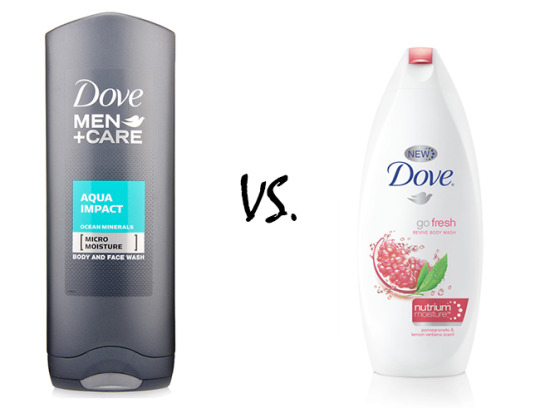
I found a website about pointlessly gendered products: https://www.boredpanda.com/pointlessly-gendered-products-women-men/?utm_source=google&utm_medium=organic&utm_campaign=organic
"Water shouldn't be bottled - it should be free"
Queer Design
It's about questioning & disrupting heterosexual & cisgender norms
"Be Gay - Do Design"
1 note
·
View note
Text
Ecological Design
As a continuation of my first post about ecological design, I wanted to find some samples which in my opinion handles the concept of ecological design interestingly. But before that, short recap about what ecological design:
Ecological design can be defined as design that minimizes the environmentally destructive impacts by integrating itself with nature's own flows.
Modular Bee Habitat System
Starting with something crazy, this is a module system, that provides nesting support for native bee populations. It can be installed anywhere and is optimized for small spaces. Also, the nesting itself is made from recycled hardwood and bamboo while the module shell and the internal module is made out of recycled plastic [1].
critical-nana: I find the core idea of this pretty nice, as bees are an essential part of our eco system, you are giving back something to nature which is very eco design. However, I do not totally understand the use of plastic - the job could also be done by wood or other materials, so it would 100% bio-degradable. However, I mean it is recycled plastic, so it would make a good use of plastic which already exists.
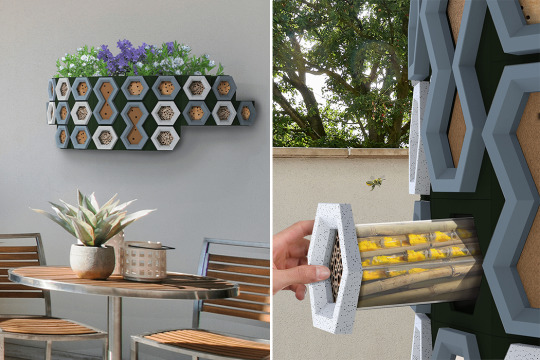
Bamboo Iron
In this sample the designer took on a project to challenge themselves to work with bamboo as a material. Bamboo is a sturdy, easy-to-grow, and eco-friendly resource, and it has even been used as a building material for houses in some parts of Asia, so why not try to make household items too? [2]
“It’s sustainability can be exploited to make so many different things” - Saksham Mahajan, designer of bamboo iron
critical-nana: Also, nice concept. If you try to consider the disposal stage of house hold items, it is unnecessary hard to find a way to dispose them without harming the environment. Bamboo is also a very fast growing material, perfect for items which are widely used.

Wasteware
This designer is actually from Vienna! Together with an chief, she created the collection, a range of tableware made out of leftover food. The waste collected was dried out and afterwards blended into a paste which was held together using mycelium. Water or breadcrumbs were added to the mix if needed. The spark of this idea was the crazy amount of food waste in Europe and at the same time the huge amount of waste of single-dishes [3].
"So I thought about ‘connecting’ these two issues and trying to make new materials out of food waste" - Barbara Gollackner, designer of Wasteware
critical-nana: I am not so sure about the production, but I can imagine that probably a lot energy would be used for it. Also, would the tableware also affect the taste of the food itself?

STRAWS
And now something we have probably all seen already before, non-plastic straws. Metal straws are nice for at home but for take-out shops not an option, so paper straws it is. However, we all now how paper straws get soggy and after a while it just falls apart while you can enjoy a drink with a little bit of paper taste. A company designer an alternative straw made out of dried stems. It does not soak and is of course still bio-degradable.
critical-nana: This product itself is actually a first world problem, you can just drink straight out of cup. But straws exists and take-out drink shop exists, so this is a nice solution to the soggy paper struggle. Maybe the production is also not as elaborate as paper straws, where you have to get paper first while these stems are essentially "done" already.
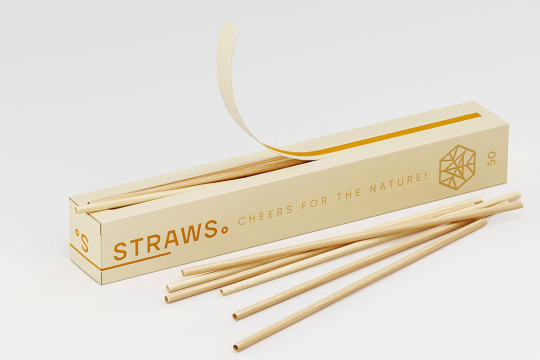
[1] https://www.yankodesign.com/2021/01/01/this-modular-habitat-system-was-designed-to-save-the-bees-it-is-their-good-place-neighborhood/
[2] https://www.yankodesign.com/2020/02/02/a-bamboo-iron-to-smoothen-out-the-wrinkles-in-sustainable-living/
[3] https://www.yankodesign.com/2023/04/03/a-viennese-designer-shows-us-what-to-do-with-leftover-food-make-reusable-tableware/
[4] https://www.yankodesign.com/2020/03/20/sustainable-straws-that-dont-get-soggy-and-saves-turtles/
7 notes
·
View notes
Text
Look at this, this is a super interesting topic and also a interesting conceptual sample! 👏
Adaption to East Asian Beauty Standards
A little bit different to the topics I have addressed here, but something I have seen often in my daily life while scrolling through social media. Asian beauty standards might be not so very different from the west, however the mentality is vastly different. While in western media there is the trend to stay natural and "love yourself" in China and many other east asian cultures it is often encouraged to adapt yourself to the beauty standards, even often by your own family members.
QOVES Studio described it pretty nicely and also the reasoning behind:
youtube
Double Eyelid Tape
This product is extremely common through East Asia. The aim of double eyelid tape is to either create a double eyelid or to make it more pronounced by taping a small piece of plastic film on your eyelid, which in result creates a fold [1]. A double eyelid make the eye in general appear bigger, which is a beauty standard in East Asia.

Skin Whitening Products
While this one is not as common as the first example, it is a representation to achieve the east asian beauty of pale skin. Through the use of this cream it should brighten the skin. I should add that mostly it is not working or the cream could cointain some serious harmful ingredients [2].

Nose Lifting Clip
A tall and small nose is also favoured in East Asia. This nose clip is inserted in the nose which raises the nose bridge and also narrows the width of the nose [3].

V-Shape Face Slimming Mask
A v-shaped and slim face is another ideal, especially in South Korea. The mask should tighten the skin, especially around the chin area, enhancing the V-shape .

critical-nana: Instead of going in depth to every individual products, I will make summary here as the core issue is the same. The goal to reach a certain beauty standard is not per se a questionable thing to do, but the mentality behind it. Also, while some products here, like the eyelid tape, cause no harm to the user, the skin whitening cream could contain toxins, which could cause health issues and are probably also useless. There are even more extreme and weird products but I wanted to introduce products which I have seen people use and are actually pretty common.
[1] https://www.amazon.in/AGE-CARE-Invisible-Sticker-Stripe/dp/B07BYL44RF
[2] https://www.ebay.com/p/16028331230
[3] https://de.aliexpress.com/item/1005003247365323.html?gatewayAdapt=glo2deu
[4] https://de.aliexpress.com/item/4001159352920.html?gatewayAdapt=glo2deu
7 notes
·
View notes
Text
Exploring the Concept of Fixing, Redesigning and Beautifying the Urban Environment
The next thing that catches my attention is… I have noticed that there are very creative ways to fix and beautify (parts of) a city. Thus, successfully bringing some excitement and imagination to the normally dull and lifeless urban environment. I found some cool examples showing these:
"Urban Geode Project", which involves creating fake geodes from paper mache and placing them in cracks in the sidewalk or other urban areas to add a bit of sparkle and surprise to the environment.
"Pothole Art", which involves filling potholes in the street with creative designs like a mosaic, a drawing or other creative ideas to draw attention to the need for repairs.
"Pothole Gardens", are another way of pothole art which involves transforming potholes into miniature gardens to draw attention to the need for repairs and to create a greener and more sustainable environment.
"Lego Patchwork", is a creative project in which cracks and holes in walls are repaired and filled with Lego bricks, creating a unique and visually interesting style.
"Street Furniture Hacking", which involves modifying public furniture like benches and trash cans to create new and unexpected uses for them.
"Moss Graffiti", which involves creating graffiti using moss instead of spray paint, is a more eco-friendly and sustainable alternative.
"Street Art/Chalk Art", which involves creating art on the street or sidewalk using chalk or other temporary materials to add colour and creativity to the urban environment.
4 notes
·
View notes
Text
Critically Evaluating the Concept of Fixing and Beautifying the Urban Environment
Let's take a closer look at some of the potential issues and drawbacks to the projects mentioned in the previous post:
It's important to note that temporary solutions like pothole art, moss graffiti, and paper mache geodes are not a substitute for permanent solutions that address the root cause of the problem.
Before implementing any project, it's essential to consider the potential environmental impact, such as the impact on drainage or the natural ecosystem caused by pothole gardens or moss graffiti. The use of plastic in the Lego patchwork project could also have negative environmental consequences.
Projects like pothole gardens and paper mache geodes require ongoing maintenance and upkeep to prevent the situation from worsening.
Additionally, it's important to keep in mind that these projects may have limited impact and could potentially create safety hazards for pedestrians or cyclists. Alterations to public spaces should prioritise accessibility and safety for everyone.
Here are some of the design movements that these projects can be connected to:
The use of bold colors and playful shapes in these projects aims to make public spaces more welcoming and inclusive, much like the aesthetics of queer design. Rainbow crosswalks are a clear example of a project with connections to LGBTQ+ activism.
Projects that create new and unexpected uses for existing structures or objects align with the principles of afro-futurism, like the urban geode project or the pothole (art/garden). They also highlight the importance of community engagement and cultural identity in shaping public spaces.
Projects like pothole gardens and moss graffiti prioritise sustainability and natural materials, such as ecological design.
Projects like pothole art and street furniture hacking incorporate local culture and history into public spaces, which aligns with the principles of indigenous design.
I have run out of words in my thoughts after writing this meter-long paragraph, but I still want to complete my blog post, so I'll leave you with a few sparkles. ✨✨✨✨✨✨✨✨✨✨✨
3 notes
·
View notes
Text
Universal design
It's a design approach that seeks to create products, and environments that are accessible to all people, regardless of their abilities. It aims to eliminate barriers and promote inclusion for people of all ages, sizes, and abilities.
Some examples:
Accessible restrooms: designed with universal access in mind may include features such as grab bars, lowered sinks.
Curb cuts: allow for wheelchair users and people with mobility impairments to safely cross the street. They also benefit parents with strollers and people with carts or luggage.

Clear Signage / Braille: signage with high contrast and simple language can benefit people, reduces confusion.
Subtitles: benefit people with hearing impairments, as well as those who may need to watch videos or presentations in noisy or quiet environments.
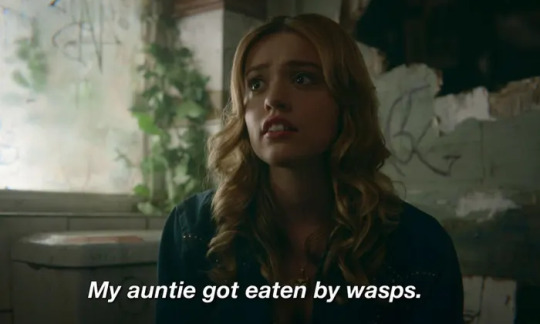
4 notes
·
View notes
Text
Ecological Design (again? 👀)
Yes, but this time as a conceptual sample. 😊
You can find explanations of what Ecological Design is in the post below. I decided to go for it again, since it is a very important topic imo and it is (I guess) kind of our group topic(?).
Examples:
Green Buildings: buildings designed to be environmentally sustainable and energy-efficient. They often incorporate features such as solar panels, green roofs, rainwater harvesting. https://en.wikipedia.org/wiki/Green_building
Sustainable Agriculture: farming practices that are designed to promote soil health, biodiversity, and environmental sustainability. https://en.wikipedia.org/wiki/Sustainable_agriculture
Upcycling: Upcycling, such as turning old clothes into rags or using jars as storage containers, can reduce waste and conserve resources. https://en.wikipedia.org/wiki/Upcycling

Bamboo Utensils: Bamboo is a fast-growing and renewable resource. They can help reduce waste and the use of plastic utensils.
Biodegradable Dog Waste Bags 💩: Bags made out of materials that can be broken down by natural processes. They can help reduce waste and pollution from pet waste. Regarding https://www.rover.com/blog/reviews/truth-about-biodegradable-poop-bags/ this bags are sadly often not that environmentally friendly like they seem, since there are not enough guidelines. 🥲
Cloth Shopping Bags: Using cloth shopping bags instead of single-use plastic bags can reduce waste and litter. Austria even did a kinda cool thing regarding that and banned one-use plastic bags in 2020. https://www.bmk.gv.at/themen/klima_umwelt/kunststoffe/massnahmen/plastiksackerlverbot.html
4 notes
·
View notes
Text
Throwback: Ecological Design
Last time (before Easter break🐰) we, Christina, Iryna, Renate & I, had a presentation on Ecological Design. We focused on several topics:
What is it anyway?
"Ecological design can be defined as any form of design that minimizes environmentally destructive impacts by integrating with living processes, nature's own flows, cycles and patterns." https://doi.org/10.1007/978-90-481-2501-2_6
Goals
To create designs that use fewer resources and reduce waste. https://youmatter.world/en/definition/definition-eco-design-examples-definition/
History & Development
Here we have listed some "milestones" in Ecological Design over the past decades. For example:

Examples & Case Studies
Examples abound, we've picked out the following here:
Green roofs (more plants in cities, less heat, …).
Permeable paving (allows water to seep into the ground)
Renewable energy systems (solar, wind, water, …).
As a case study, we took Shanghai Houtan Park. This purifies more than 600,000 gallons of polluted river water daily through purely biological processes. https://events.development.asia/system/files/materials/2015/05/201505-shanghai-houtan-park-landscape-living-system.pdf
1 note
·
View note
Text
About the cult lol
Katta after today's lecture:
1 note
·
View note
Text
Memes? MEMES?! (and Quotes)
In every break:
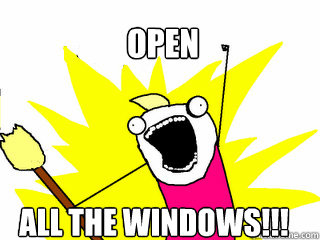
"Don't take it serious, but take it seriously"
"I want you to make a concept [...] make it weird."
That's probably a quote I'll stick with, at least the last part.
1 note
·
View note
Text
My first entry
(Maybe) last but (hopefully) not least 🙈, hi everyone 😉.
This will be my blog where I will share my thoughts and all the things we gonna do in the course. Let's see together in which direction this will go.
I am completely new to Tumblr, so let's see how this will develop. Just searched 5 minutes, where I could customize my profile and stuff, but I am sure I will make this out. 😊
2 notes
·
View notes